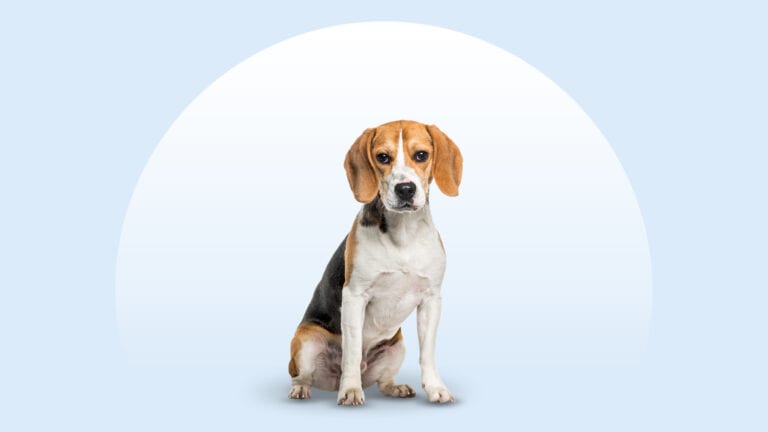Beagle vs Bloodhound

Breed Snapshot
Best For
Beagles, small and friendly, thrive on activity and companionship. With an affectionate nature and keen sense of smell, they make excellent family pets. They're ideal for those seeking a playful and energetic canine friend who...
Beagles, small and friendly, thrive on activity and companionship. With an affectionate nature and keen sense of smell, they make excellent family pets. They're ideal for those seeking a playful and energetic canine friend who flourishes with love and outdoor adventures.
Beagle Temperament
The Beagle’s temperament is generally joyful, determined and adventurous. They’re spunky dogs who typically get along well with others, and their curious personality means they love to play and explore. Couch potatoes they are not! In fact, they need a lot of exercise and thrive when given...
The Beagle’s temperament is generally joyful, determined and adventurous. They’re spunky dogs who typically get along well with others, and their curious personality means they love to play and explore.
Couch potatoes they are not! In fact, they need a lot of exercise and thrive when given a job to do. They were originally bred to track and hunt game, and you’ll often see them with their nose to the ground. At times they can be too driven by scents. Don’t be surprised if they smell something interesting and take off!
Known for their intelligence, a bored Beagle may get themselves into trouble. Don’t worry—Beagles are happy to tell you when they need more stimulation with their attention-getting vocalizations. A cross between a bark and a howl, the unmistakable Beagle “baying” is sharper than a bark but not as drawn out as a howl. Beagles love to join in when they hear other dogs howling or when they want to express themselves with their “Beagle noises.”
Agility training, scent work or tracking classes might be good activities to explore with these smart, strong-willed dogs. (Psst, the National Beagle Club is a good resource for events and other activities for this breed.)
While a Beagle puppy can be mouthy and chew things they shouldn’t (just like any other puppy!), the Beagle breed isn’t expected to have aggressive tendencies as an adult. These social, family dogs get along well with children and are great for active families. And since they were originally bred for hunting in packs, they also do well with other dogs, although they may need more time to adjust to cat households.
Beagle Traits

Breed Snapshot
Best For
Bloodhounds are exceptional scent trackers with a gentle demeanor. They need ample exercise and mental stimulation, making them ideal for active families seeking a devoted and patient companion.
Bloodhound Temperament
“A nose with a dog attached” is a common way to describe a Bloodhound. Their sense of smell is extraordinary, and their nose is what they use to navigate the world around them. This trait can’t be trained out of them; your Bloodhound has access to an entire wor...
“A nose with a dog attached” is a common way to describe a Bloodhound. Their sense of smell is extraordinary, and their nose is what they use to navigate the world around them. This trait can’t be trained out of them; your Bloodhound has access to an entire world that you can’t see (or smell), and they will go where their nose takes them.
When not in hot pursuit of a scent, the Bloodhound breed can be laid-back members of the family. But just like people, their personalities can differ: Some are so high-energy that they’re seemingly always on the move, and others are happy to spend some downtime curled up on the rug. You can help them expend their energy by letting them romp by themselves in the backyard (as long as the yard is fenced). They’re also eager to go on hikes or walks with you. Just remember, when they catch a scent, nothing stands in their way—and they are off! (They look like they’re at Mach speed when they go.) For this reason, make sure any dog walker (professional or pint size) has a firm grasp on the leash!
With their sturdy size and high energy levels, they may accidentally knock over toddlers, but their temperament is very low-key. While they get along great with other animals and people, they may sometimes be shy, so it’s a good idea to start socializing your Bloodhound puppy while they’re young.
A Bloodhound can be slower to mature than other breeds. This isn’t code for “unintelligent,” but it does mean that housebreaking and mastering commands (like sit, stay and come) may take more time for them than other pups. Be consistent and kind and make sure everyone is on the same page when it comes to rules of the house—inconsistency will confuse a Bloodhound, and they may decide to make up their own rules instead. Bloodhounds do best when they know exactly what to expect from the people in their family.




